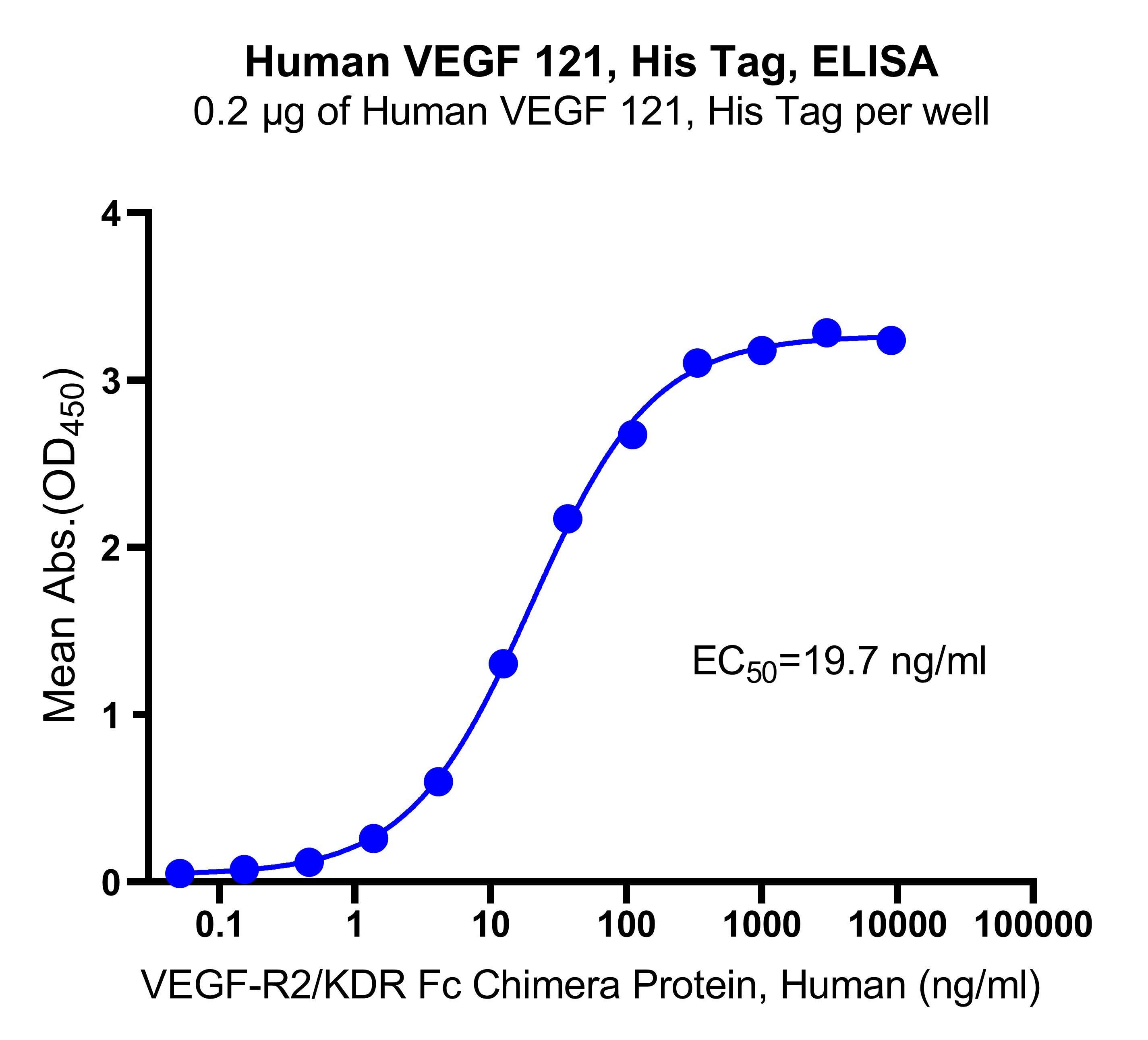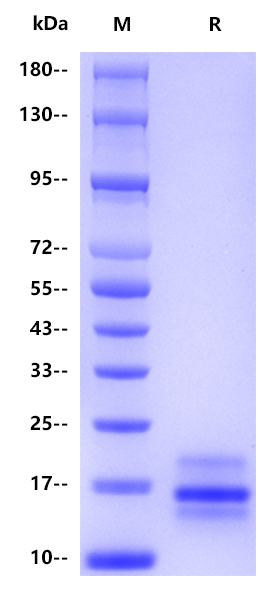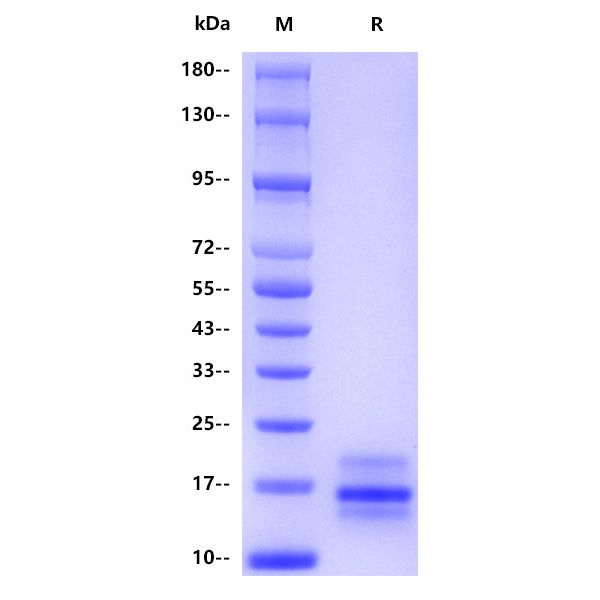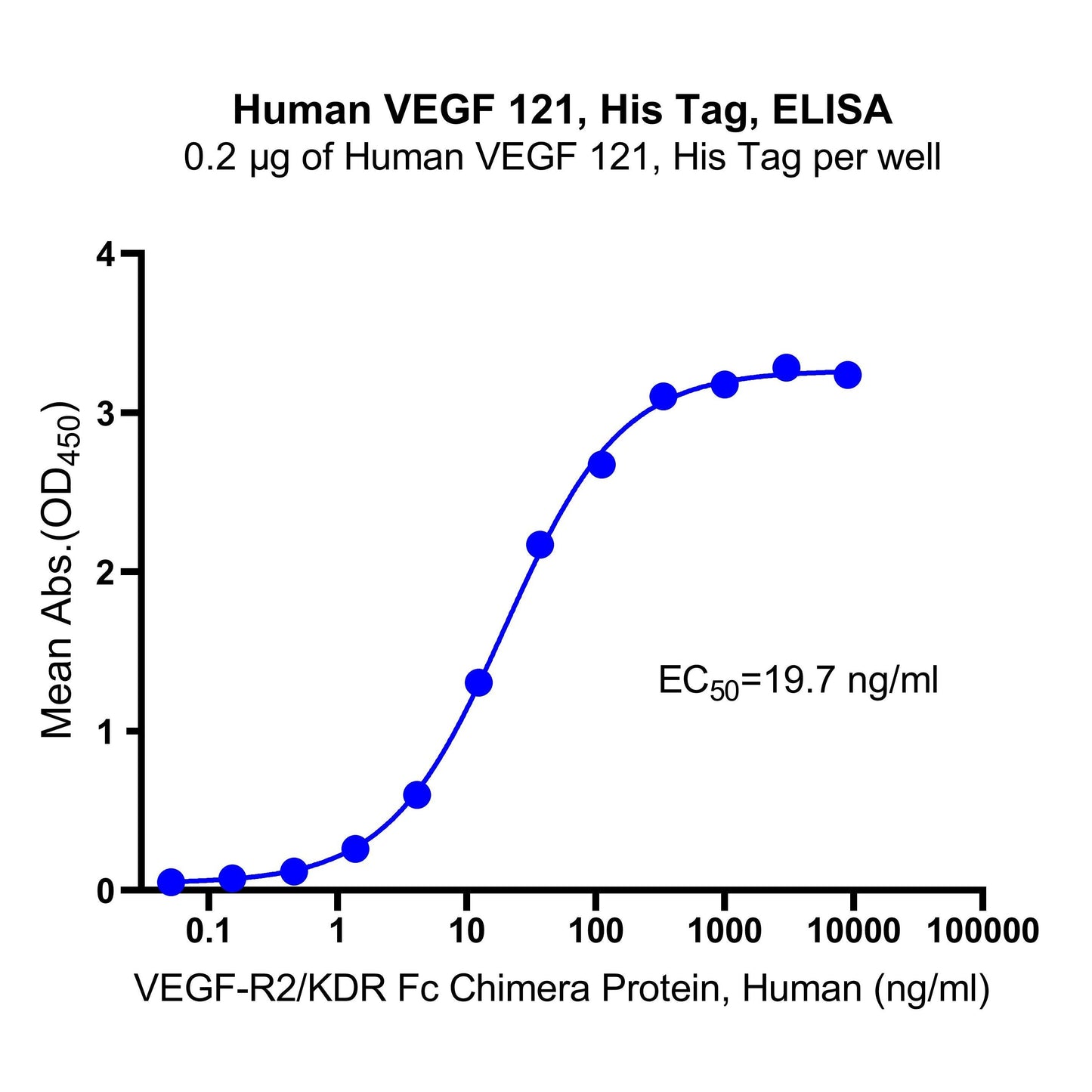Immobilized Human VEGF 121, His Tag at 4 μg/mL (50 μL/well) can bind VEGF-R2/KDR Fc Chimera Protein, Human (Cat. No. UA010144) with EC50 of 17.8-21.8 ng/mL.
Product Details
Product Details
Product Specification
| Species | Human |
| Accession | P15692-9 |
| Amino Acid Sequence | Protein sequence(P15692-9, Ala27-Arg147, with C-10*His) APMAEGGGQNHHEVVKFMDVYQRSYCHPIETLVDIFQEYPDEIEYIFKPSCVPLMRCGGCCNDEGLECVPTEESNITMQIMRIKPHQGQHIGEMSFLQHNKCECRPKKDRARQEKCDKPRRGGGGSHHHHHHHHHH |
| Expression System | CHO |
| Molecular Weight | Theoretical:15.7kDa Actual:16kDa |
| Purity | >90% by SDS-PAGE |
| Endotoxin | <1EU/μg |
| Tag | His Tag |
| Physical Appearance | Lyophilized Powder |
| Storage Buffer | Lyophilized from a 0.2 μm filtered solution of 0.2M PBS, pH7.4. |
| Reconstitution | Reconstitute no more than 1 mg/mL according to the size in deionized water after rapid centrifugation. |
| Stability & Storage | 12 months from date of receipt, -20 to -70 °C as supplied. 6 months, -20 to -70 °C under sterile conditions after reconstitution. 1 week, 2 to 8 °C under sterile conditions after reconstitution. Please avoid repeated freeze-thaw cycles. |
Background
Vascular endothelial growth factor (VEGF-121) is a naturally-occurring VEGF-A splice variant involved in embryonic vasculogenesis and angiogenesis. VEGF binds to VEGFR-1 and VEGFR-2, and activates Raf/MEK/ERK and PI3K/AKT pathways. VEGF-121 is released as a freely diffusible protein by a variety of normal and transformed cells. It plays an important role in neurogenesis both in vitro and in vivo. It has neurotrophic effects on neurons of the central nervous system and promotes growth and survival of dopaminergic neurons and astrocytes. VEGF also promotes growth and survival of vascular endothelial cells, monocyte chemotaxis, and colony formation by granulocyte-macrophage progenitor cells.
Picture
Picture
Bioactivity

SDS-PAGE

2μg(R: reducing conditions)




